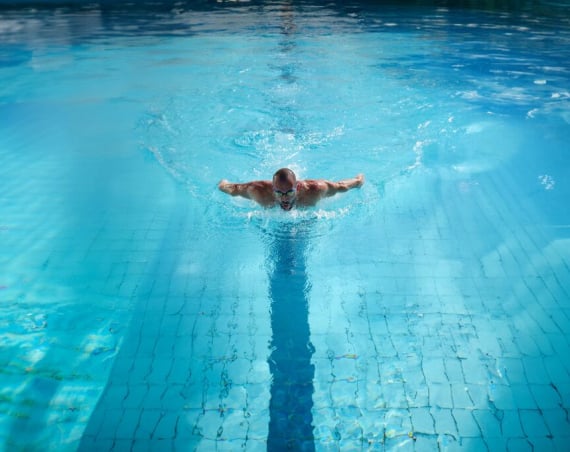From beginners to veterans, every runner knows that races are great motivators to reach new distances. So, if you’ve already aced the 5k or 10k, you may be looking for a new running milestone to work towards.
The next step up is, of course, the immensely popular half-marathon. At 13.1 miles, there’s no doubt that this is a real test of endurance. But with a regular running schedule, comprehensive training, and plenty of time for recovery, you can be sure to reach the finish line in a time you can be proud of.
Who can run a half-marathon?
If you’re not sure about signing up for a half-marathon, remember that most dedicated runners — regardless of age — can pull off this race with the right training. Even so, you may want to consider some basic criteria to see if this is the right distance for you. To complete a half-marathon, you should have:
At least some racing experience. Start by completing a 5k or 10k so you know your endurance level and the time it takes to run these distances.
Enough time to train properly. Depending on your current ability, you may need to embark on a training regime lasting between 12 and 16 weeks. If you don’t have that time to train right now, it’s better to hold off.
The ability to handle the terrain. Treadmill and track training sessions don’t capture the sensation of pounding the pavement for mile after mile. Running on roads impacts joints and muscles, so make sure your training accounts for these conditions.
Training tips for half-marathon runners
Steadily increase your distances
Increasing the distance you can handle requires you to engage in a training plan and see it through. Most training plans for half-marathons build in 3-4 days of running per week, with one of those days being a long run. You could run somewhere between 5-8 kilometres for short runs, and make longer runs closer to 10k in order to gradually add distance and close in on the full half-marathon distance.
Along with the physical side of distance training, there’s the mental game. Long runs will challenge your ability to stay motivated. Find what works for you to stay engaged, whether it’s an upbeat playlist for long-distance runners, losing yourself in podcasts, or having a running buddy to keep up your energy.
Don’t miss out on mobility work
Getting half-marathon ready is no insignificant task, and it will put a strain on your body. You might notice tight quads and hamstrings or ache in the ankles and hips. Sound familiar? You can take the edge off these runners’ annoyances with mobility work.
While stretching focuses squarely on flexibility, mobility work engages your joints’ entire range of motion, helping you move fluidly and avoid nagging pain and injury.
Building mobility work into your running routine doesn’t take a lot of time or effort. In fact, including it in a 10-minute warm-up before training is all you need. Popular mobility moves for runners include lunges, knee pulls, arm circles, hip rotations, and squat stretches. Ultimately, mobility training is key to injury prevention, so don’t skip these moves.
Equipment upgrades that can help
You can train for a half-marathon with just the basics, but upgrading your running gear definitely helps. So, what are the must-haves for long-distance runners? Here’s our kit list that will get you from training to race day:
- Speciality running shoes with plenty of cushions
- Moisture-wicking running socks
- Anti-chafe balm
- Washable cap to keep sun and rain out of your eyes
- Weatherproof jacket
- Running belt for securing keys, phone, and money
- Wearable tech to track your pace
- Wireless headphones
- Foam roller for recovery
- On-the-go snacks
- Water bottle belt
Cross-train with exercises that support your running
Hitting your target distance is just one piece of the puzzle. Running workouts should also include exercises that go beyond cardio so you have the strength to support yourself on long runs.
Try adding strength exercises into two of your training sessions for the week. You can choose to dedicate a day to strength training or you can always combine it with running in the same session. Start with strength exercises using just your body weight, then gradually add in equipment like dumbbells or other gym equipment.
Strength exercises benefiting runners focus on core and leg muscle groups. Pick two or three to start, and then add more as you continue to train. Begin with leg and core strength training moves like:
Leg training
- Squats
- Lunges
- Step-ups
- Wall sits
- Calf raises
Core training
- Side plank rotations
- Bird dogs
- Bicycle crunches
- Windshield wipers
- Bridges
Avoid common mistakes for runners
There’s a lot to keep track of when you’re training for a half-marathon. Mistakes will happen along the way in training or even on race day, but the best way to minimise them is to stay aware. When training for a half-marathon, make sure you:
- Avoid overtraining, especially close to the race,
- Get sufficient nutrition before and after running,
- Make time for stretching or mobility work,
- Don’t push your pace too much (walking breaks are fine)
Take time to recover to prevent surprise injuries
Avoidable injuries derailing all your work and time are extremely frustrating. That’s why taking recovery seriously is key to keeping injuries at bay. Nutrition is your first and most effective way to rebound after rigorous training. Eat something with complex carbs and plenty of protein about 30 minutes after working out to restore energy. And, of course, drink lots of water.
Cool-down exercises are an effective way to avoid overtaxing muscles. You can also do some stretching, but keep it gentle. To alleviate soreness, foam rollers are a great tool for giving muscles a much-needed massage. Discover the right methods for you in our guide to recovery after exercise.
If you need more support, we’re always happy to help you formulate a workout plan. Find your local David Lloyd club and find out how we can help you reach your fitness goals.
Find a club



